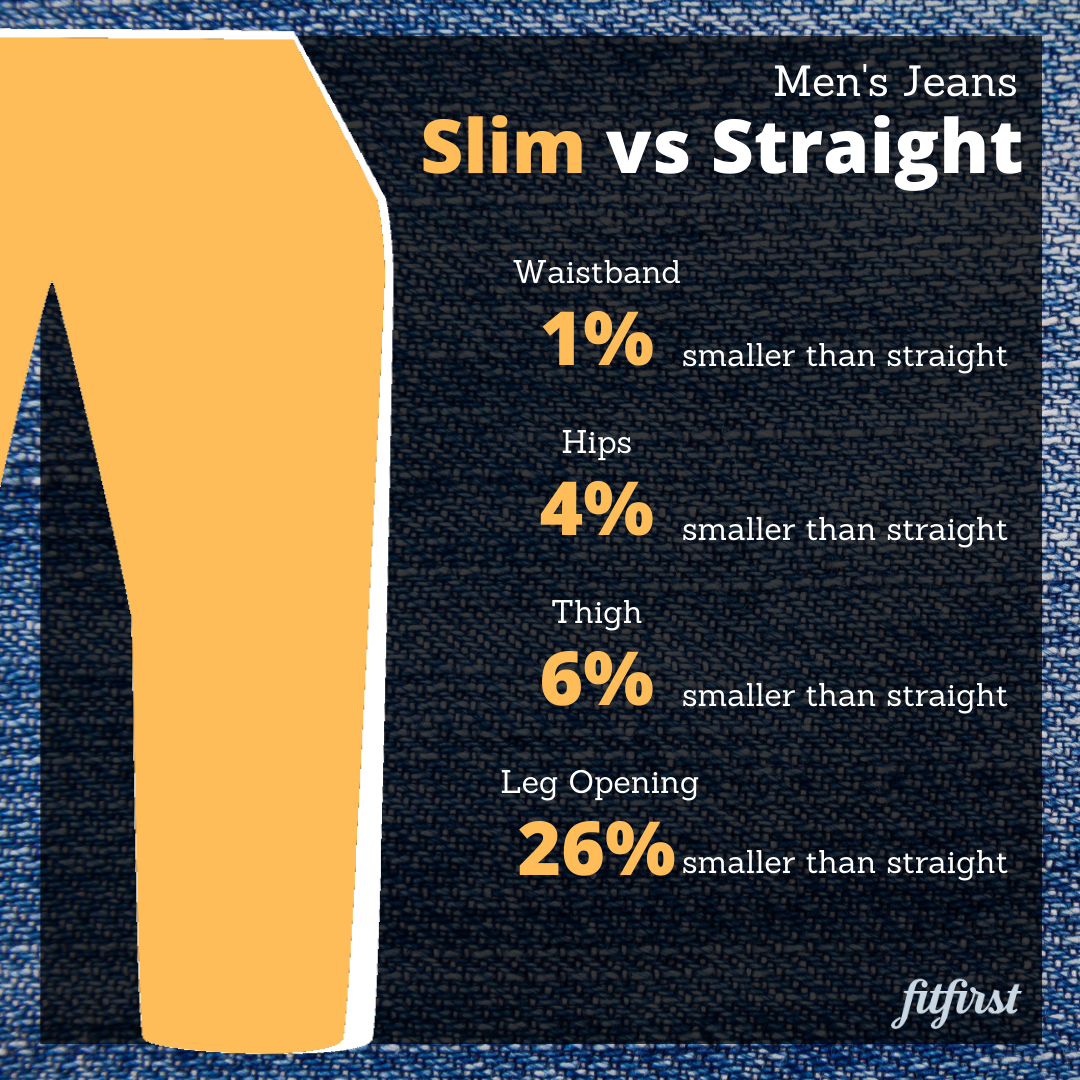How Do Men's Pant Sizes Work?
Men’s pant sizes are confusing. Unlike shirts -- which are sold in small, medium, and large sizes -- brands sell men’s pants using two numbers and fit labels like “slim fit” or “regular fit”.
Additionally, pant sizes aren’t standardized. The same size in two different brands may have different waistband measurements. Moreover, the sizing system for men’s pants works differently from both European men’s pant sizes and US women’s pant sizes.
It’s hard enough figuring out your size in clothes that are labelled small, medium, or large. It’s a lot more complicated for pants because there’s two numbers sprinkled with a few words. It’s even harder when you know your size in one system and need to convert to another.
I never liked how confusing shopping for pants can be. A while back, I gave up. Instead of squinting at labels, wondering how a pair of pants would fit, I set out to turn pant shopping into a science. I’ve personally spent hundreds of hours researching pants and measuring hundreds of jeans.
I learned that reading men’s pant sizes isn’t as hard as it looks. The gist of it is quite simple:
The first number in a pant size is the waist size. It tells you the natural waist measurement -- in inches -- that the pants are designed for.
The second number in a pant size is the length. It tells you the leg length -- in inches, from crotch to the top of the ankle -- that the pants are designed for.
Men’s pant size numbers only tell you how the waist fits and how long they are. That’s where fit labels come in. Fit labels tell you about the width and shape of the pant leg.
How to Read Men's Pant Sizes
There’s a standard way that brands label men’s pant sizes in the US. Men’s pant sizes consist of two numbers. Usually, the numbers are separated by a “x”, like 36x32. Each number in men’s pants sizes tells you something about how big the pants are.
The first number on a pair of men’s pants is the waist size. For example, if a pant is labelled size 36x32 then the waist size is 36.
The waist size is a best guess about the natural waist measurement that the pants are designed for. So, a pant with waist size 36 is designed for men with a 36” natural waist.
The waist size does not tell you how big the waistband is. The waistband measurement is usually bigger than the labelled waist size because pants sit below your natural waist. Your body gets wider below your natural waist, so the waistband needs extra room to fit correctly.
The second number is the length size. For example, if a pant is labelled size 36x32 then the length size is 32. The length size is a best guess about how long your leg is from the top of the thigh to the top of your ankle in inches.
The length size is related to the inseam measurement on a pair of pants. For most pants, the inseam measurement equals the length size in inches. However, the inseam measurement can vary by an inch or two from the labelled length size.
Pants that are tapered have an inseam that’s an inch smaller than the length size. Meanwhile, pants that are bootcut usually have an extra inch or two in the inseam so the leg opening can fit around the top of your shoes.
For example, Levi’s 502 Taper Fit (Amazon link) has an inseam measurement that’s an inch smaller than the length size. The size 32 on Levi’s 502 is secretly a size 31. The same goes for Wrangler’s Regular fit jeans. Levi’s 527 Slim Boot Cut, however, has an inseam that’s an inch bigger than its length size.
How do I find my pant size?
If you have a pair of pants you like, you can find the size of your favorite pants on the tag. The tag is inside the waistband on the back of the pants. That’ll tell you what your size is in that brand.
You can’t assume that your pant size is the same in every brand, however. That’s because every brand designs pants for different body shapes. When we measured hundreds of jeans, we found that the waistband on a size 36 can vary by up to 3” -- that’s the difference between a perfect fit and something that’s too loose or tight.
If you’re shopping for pants from a new brand, there’s a couple ways to find your pant size.
One way to find your pant size is by measuring yourself. You can measure your natural waist with a flexible tape measure (Amazon link). Then, you can match your natural waist measurement to a size chart.
Unfortunately, measuring yourself can be challenging, and size charts aren’t always accurate. More importantly, buying good fitting pants is more than matching your waistband measurement to a size chart. If your body shape doesn’t fit well in the shape of that brand’s pants, then no size is right for you. That’s why we recommend avoiding size charts if you can.
The good news is you don’t need a tape measure to know your size in a brand you haven’t shopped from before. You can use your pant size in your favorite brand to figure out what your pant size is in other brands. In fact, we built a tool that lets you find pants that fit like your favorite pair by doing just that.
What are the types of pant fits?
Brands can label pants with both a size and a fit. A size tells you how big the pants are, both around the waist and through the leg. A fit label tells you how wide a pant is within a brand.
Within a brand, four types of fits describe how wide the pants are:
Skinny fit. This is the narrowest pant a brand makes. Skinny fit pants are meant to hug your body.
Slim fit. This fit is as wide or wider than the skinny fit pant a brand makes.
Regular fit. Regular fit is also called classic fit or original fit. This is the traditional pant fit. It is supposed to leave 2” to 3” of room around your seat -- the area of the pants around your hips
Relaxed fit. Relaxed fit is also called loose fit. This is the baggiest pant a brand makes.
Three types of fits describe the shape of the pant leg:
Taper fit. Taper fit pants have a knee measurement that is bigger than the leg opening. The average difference between the knee and leg opening is 2.1”.
Straight fit. Straight fit pants have a knee measurement that’s as big as or slightly bigger than the leg opening. The average difference between the knee and leg opening is 1.1”
Bootcut fit. Bootcut pants have a knee measurement that’s smaller than the leg opening. On average, the leg opening is 1” bigger than the knee on bootcut jeans.
Fit labels on men’s pants can be very complicated. You can’t compare fit labels across brands. Some brands’ slim fit pants are narrower than other brands’ skinny fit pants. Some fit labels, like slim fit or straight fit, have ambiguous meanings. For more information, check out our articles on men’s pant fits:
How do you convert US Men's Pant Sizes to European Men's Pant Sizes?
European men’s pants don’t follow the same sizing rules as US men’s pants. This includes pants from Italy, France, Germany, Spain, Sweden, the Netherlands, and Portugal.
There’s a simple way to convert between US and European pant sizes. Add 16 to your US waist size to get the right European size. Here’s a chart to help out:
| US Waist Size | Euro Waist Size |
|---|---|
| 26 | 42 |
| 27 | 43 |
| 28 | 44 |
| 29 | 45 |
| 30 | 46 |
| 31 | 47 |
| 32 | 48 |
| 33 | 49 |
| 34 | 50 |
| 35 | 51 |
| 36 | 52 |
| 38 | 54 |
| 40 | 56 |
| 42 | 58 |
| 44 | 60 |
Just as in the US, waistband measurements are not standardized in Europe. You should always check a size chart or use our tool to find your pant size when shopping from a new brand.
How do you convert between men's and women's pant sizes?
Women’s pant sizes don’t use the same system that men’s pant sizes do. Women’s pant sizes are typically described by a number and a letter or word. The number is the waist size and the letter or word is the length size. Unlike men’s pant sizes, neither of these are in inches.
There are two types of women’s waist sizes. One goes like 0, 2, 4, 6, etc. These are standard women’s waist sizes. There are also waist sizes that look like natural waist measurements. They go like 27, 28, 29, 30, etc.
On average, it’s possible to convert between women’s and men’s pant sizes. Here’s a chart to help out:
| Men's Waist Size | Standard Women's Waist Size | Natural Women's Waist Size |
|---|---|---|
| 26 | 2 | 26 |
| 27 | 4 | 27 |
| 28 | 6 | 28 |
| 29 | 8 | 29 |
| 30 | 10 | 30 |
| 31 | 12 | 31 |
| 32 | 12 | 31 |
| 33 | 14 | 32 |
| 34 | 16 | 33 |
| 35 | 16-18 | 33-34 |
| 36 | 18 | 34 |
| 38 | 20 | 35 |
| 40 | 22 | 36 |
| 42 | 24 | 37 |
Like men’s pants, women’s pants do not follow standardized sizing practices. Every brand sizes their pants differently. This means you should only use our chart as a rule of thumb.













